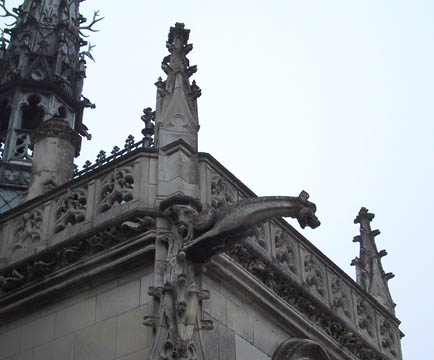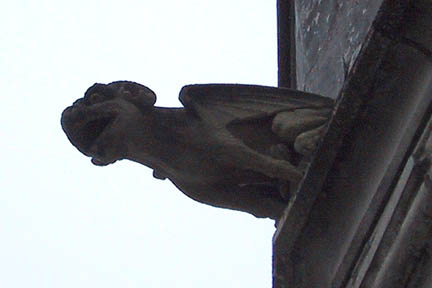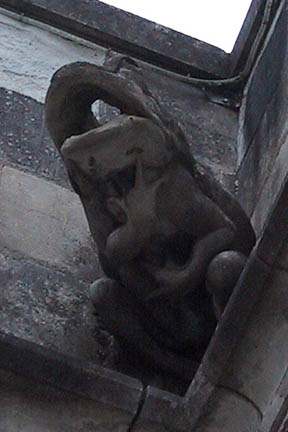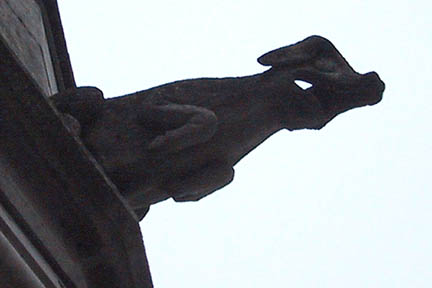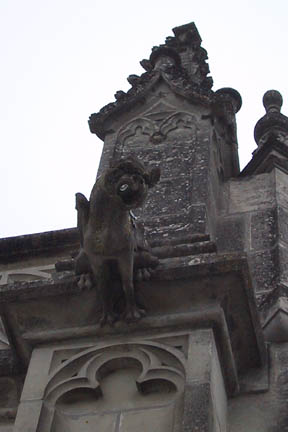|
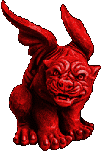 One
of the most interesting aspects of Amboise is its Gothic lace-like spires and
roof tops, with its amazing gargoyles. These jut out everywhere and range from
the mythical beast, domestic animal to human shapes. Below are just a few
examples of these. Some of the earliest known forms of this type of
architectural element have been found in ancient Roman and Greek ruins. These
were made of terracotta. Later figures were carved of wood, with a complete
shift to stone by the 13th century. One
of the most interesting aspects of Amboise is its Gothic lace-like spires and
roof tops, with its amazing gargoyles. These jut out everywhere and range from
the mythical beast, domestic animal to human shapes. Below are just a few
examples of these. Some of the earliest known forms of this type of
architectural element have been found in ancient Roman and Greek ruins. These
were made of terracotta. Later figures were carved of wood, with a complete
shift to stone by the 13th century.
Gargoyles were originally intended as waterspouts and drains to keep rain water
from damaging the foundation of buildings. The term gargoyle, comes from the
Latin gurgulio, and the Old French gargouille, not only meaning "throat" but
also describing the "gurgling" sound made by water as it ran through the figure.
Superstition held that gargoyles frightened away evil spirits while serving
their practical function. After the lead drainpipe was introduced in the
sixteenth century, gargoyles primarily served a decorative function.
Although most have grotesque features, the term gargoyle has come to include all
types of images. Some gargoyles were depicted as monks, combinations of real
animals and people, many of which were humorous. Unusual animal mixtures, or
chimeras, did not act as rainspouts and are more properly called grotesques.
They serve more as ornamentation, but are now synonymous with gargoyles.
Gargoyles can be found in many types of Gothic architecture, but they are
usually associated with the great churches and cathedrals of Europe, most
notably the Cathedral of Notre Dame in Paris, France.
|
